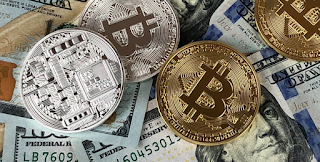What are stablecoins? A blockchain expert describes
Stablecoins are a type of cryptocurrency linked to an asset like the United States buck that doesn't alter a lot in worth.
The majority of the dozens of stablecoins that presently exist make use of the buck as their benchmark property, however, several are additionally fixed to various other fiat currencies released by governments like the euro and yen. Therefore, the rate of stable coins fluctuates extremely little, unlike prominent cryptocurrencies like bitcoin and ethereum that are susceptible to abrupt ups as well as downs.
The initial stablecoin, produced in 2014, was Tether, which several other stablecoins are imitated. Users get one token for each buck they deposit. Theoretically, the symbols can then be converted back into the initial money any time, additionally at a one-for-one exchange rate.
As of July 28, 2021, there had to do with US$ 62 billion in Tether, or a little bit more than half of the $117 billion market capitalization of all stable coins worldwide. The next-largest is known as USD Coin, which has a market cap of regarding $27 billion.
Why stablecoins matter
Originally, stablecoins were primarily used to acquire other cryptocurrencies, like bitcoin, because lots of cryptocurrency exchanges really did not have access to typical banking. They are more useful than country-issued money because you can use them 1 day a day, seven days a week, throughout the globe-- without relying upon banks. Cash transfers take seconds to complete.
Another useful feature of stablecoins is that they can collaborate with so-called clever contracts on blockchains, which, unlike standard agreements, require no legal authority to be executed. The code in the software instantly dictates the terms of the arrangement and also exactly how and when cash will certainly be moved. This makes stablecoins programmable in ways that dollars can't be.
Smart contracts have actually generated using stablecoins not only in seamless trading however additionally lending, repayments, insurance policy, prediction markets, and also decentralized self-governing companies-- businesses that operate with minimal human treatment.

